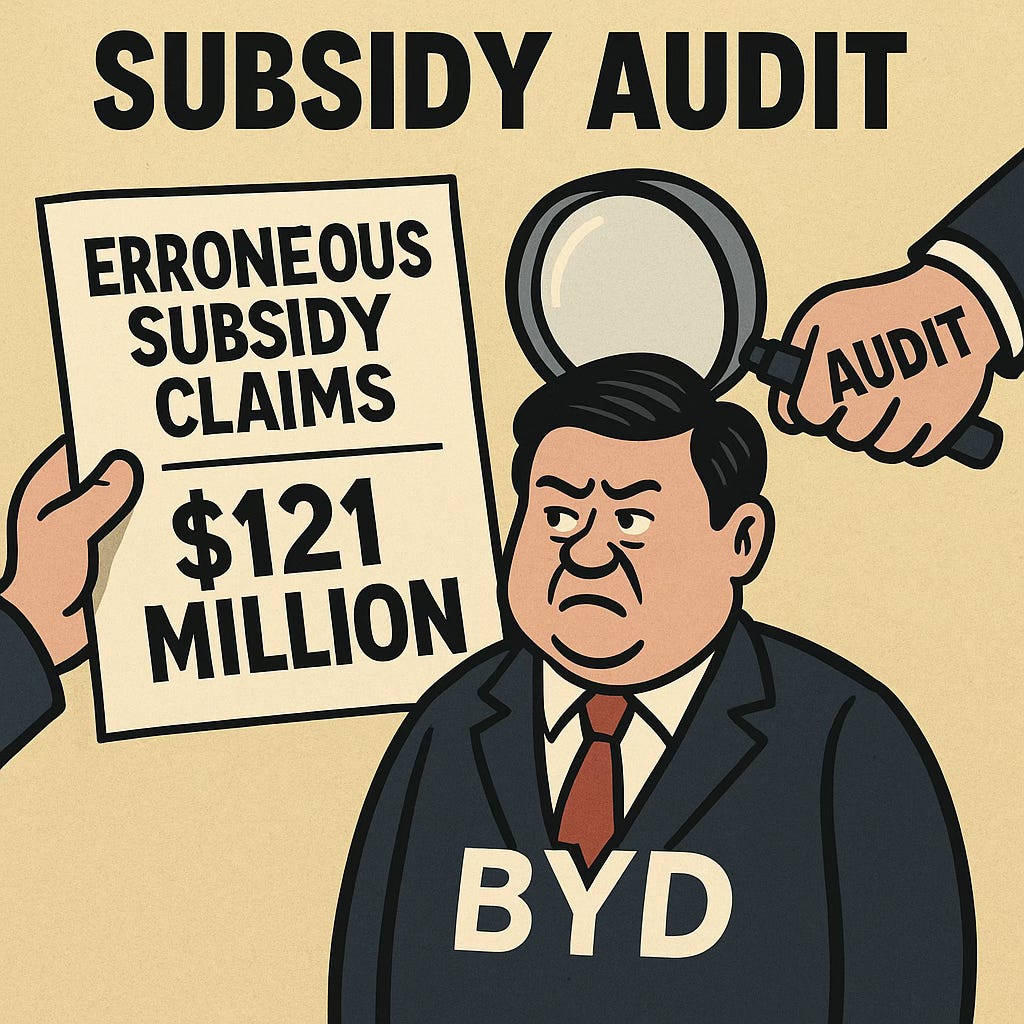BYD Under Fire: Chinese Audit Reveals $121 Million in Wrongfully Claimed Subsidies (UPDATED)
By Rafael Benavente
BYD Under Fire: Chinese Audit Reveals $121 Million in Wrongfully Claimed Subsidies
In a major blow to China’s top electric vehicle manufacturer, a recent audit by the Ministry of Industry and Information Technology (MIIT) has revealed that BYD falsely claimed nearly $121 million USD in government subsidies between 2016 and 2020. This development puts fresh scrutiny on BYD’s business practices and raises broader questions about the transparency and integrity of China’s EV subsidy system.
📊 The Scope of the Audit
The MIIT audit, published July 11, 2025, covered subsidies granted under the New Energy Vehicle (NEV) program, one of the Chinese government’s flagship industrial initiatives. The findings were stark:
A total of 4,900 BYD vehicles were found ineligible for subsidy claims.
The overpayment totaled 864.9 million RMB, or about $121 million USD.
BYD was one of several automakers flagged, but it had one of the largest improper claims among the reviewed firms.
⚠️ What Went Wrong?
While the audit summary did not specify all infractions, sources familiar with the process cited:
Improper documentation or missing vehicle registration data
Subsidy claims for vehicles not delivered or sold
Misuse of VINs (vehicle identification numbers) to double-count eligible units
Claiming subsidies for low-range EVs that didn’t meet minimum performance thresholds
These discrepancies highlight serious gaps in BYD’s internal compliance and reporting processes.
🤔 BYD's Response: Silence So Far
As of mid-July 2025, BYD has not issued an official statement addressing the audit results. Analysts speculate that the company is either negotiating quietly with authorities or preparing a legal response.
This silence is unusual given the scale of the alleged overpayment and the company’s increasing visibility in foreign markets like Europe, Latin America, and Southeast Asia.
🌍 Global Implications
BYD is already under investigation by the European Commission over possible unfair state subsidies related to its new EV plant in Hungary. This domestic audit adds fuel to the fire:
EU regulators may use the audit as evidence in their own anti-subsidy probe.
Other importing countries may begin examining how much of BYD’s global pricing advantage comes from improper government support.
Investors and trade partners may push for greater transparency in BYD’s books.
📈 Will BYD Have to Repay the Money?
This remains unclear. In prior cases, the Chinese government has:
Demanded repayment or withheld future subsidies
Imposed administrative fines
Temporarily removed offending models from the NEV eligibility list
If BYD is forced to repay or sees future subsidies restricted, it could face cash flow pressure amid its aggressive global expansion and razor-thin margins.
💡 What This Says About China's EV Subsidy Ecosystem
This case illustrates how rapid growth and massive government support have created room for loopholes, abuse, and weak oversight:
From 2015 to 2022, the Chinese government handed out over 200 billion RMB (~$28 billion USD) in EV-related subsidies.
Local governments often failed to verify whether vehicles met national standards before approving payments.
Automakers, under pressure to scale quickly, prioritized volume over compliance.
This audit signals that Beijing may be tightening its grip to ensure cleaner reporting and greater fiscal discipline.
🔮 Conclusion: A Reckoning for BYD?
While BYD has long been hailed as China’s EV champion, the latest audit reveals a more complex picture: one of financial shortcuts, regulatory risk, and potential reputational fallout.
Whether this leads to fines, subsidy clawbacks, or just a PR blemish remains to be seen. But it serves as a warning—to Chinese firms and foreign regulators alike—that even national champions are not above scrutiny.
If BYD is to maintain its global momentum, it will need to demonstrate that its success is rooted not just in state support, but in compliance, integrity, and fair competition.
By Rafael Benavente

